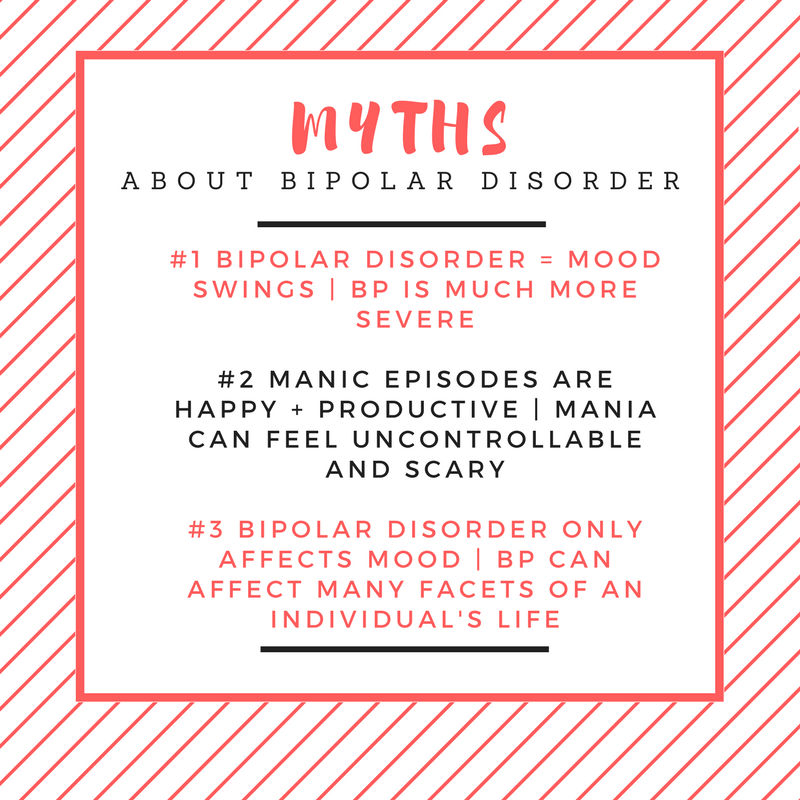
Dispelling Myths: Understanding Bipolar Disorder
Due to the normalization of the world “bipolar” in reference to individuals with quick mood swings, bipolar disorder, as a mental illness, is often misunderstood as a simple episode of regular mood swings; however, bipolar disorder is much more complicated and exists in a variety of sub-classifications such as Bipolar I, Bipolar II, and cyclothymic. The classifications depend on the length of time between episodes of mania or depression.
Bipolar disorder is synonymous mood swings.
When we think of bipolar disorder and mood swings, we think of someone’s mood changing in seconds. The reality of bipolar disorders, however, is that the stages of mania/hypomania and depression can last for weeks or even months. Hypomania is characterized as a shorter and less severe form of mania, generally followed by longer lasting, more severe depressive episodes. The time that each cycle lasts varies from person to person, but very few people cycle through mania and depression several times a day. Instead, their mood swings are much more extreme, severe, pervade over a longer period of time.
Manic episodes are happy and productive.
While this may be true for a few, this is not the case for the vast majority of people with bipolar. The initial euphoria that some people may feel when entering into mania may change into a uncharacteristically irritable mood. Mania can feel uncontrollable and terrifying because you start to lose control of your thoughts and actions. It can manifest itself in dangerous ways, such as a psychosis and risky behaviors.
Bipolar disorder only affects mood.
Like many other mood disorders, the primary diagnostics for bipolar disorder is based on the presence of mood cycles; however, this can affect many other facets of their life. Symptoms of mania are sleeplessness, increased activity levels, having more energy than usual, and higher irritability. This can cascade into the lives of individuals with bipolar disorder by affecting their sleep, behavior, and cause risky decision making with consequences that they might not realize until later. 56% of those with bipolar disorder also struggle with the co-occurring disorder of substance abuse and addiction. Drugs and alcohol often start as a way to self-medicate, but in many cases they end up triggering manic or depressive episodes.
Bipolar disorder is a very serious, lifelong disorder that can be helped through the usage of a combination of Cognitive Behavioral Therapy and medication. If there is a comorbidity with substance abuse, Cognitive Behavioral Therapy or Dialectical Behavior Therapy can help to treat both disorders. Treating bipolar disorder can be a very difficult procedure for the individuals involved, because people often do not recognize the serious symptoms of the disorder. If you know someone with bipolar disorder, try to be as understanding and supportive as you can. Bipolar disorder can often be misdiagnosed, because patients often seek help during their depressive episodes and rarely during their manic episodes. This does not mean that you should be deterred from seeking help if you or someone you know might have bipolar disorder; continuing with therapy even when you think are getting better is important. The medication available for treating bipolar disorder is also very effective and saves lives every day.
For any disorder, no matter how mild, it is important to get the appropriate help. If you are struggling with bipolar disorder or another mental disorder, please feel free to contact the professional team at Lifeline Connections for help! Visit Lifelineconnection.org or call 360.397.8246 for more information.
